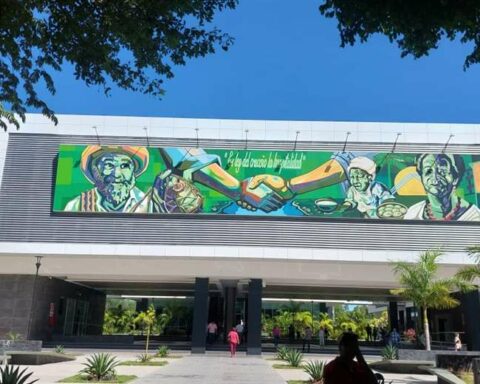Marco Belmonte / La Paz
The internal debt continues its growing trend and in the first two months of the year it grew by 1,273.3 million bolivianos, although the greatest expansion was between 2019 and 2020 in the order of 60%.
The World Bank in the recent report “Consolidating the Recovery: taking advantage of the opportunities of green growth”, mentions that the Bolivian public debt is close to 80% of the Gross Domestic Product (GDP) (See image).
Official data from the Vice Ministry of the Treasury reveals that the balance of the internal debt of the General Treasury of the Nation (TGN) as of December 31, 2021 was 95,253.2 million bolivianos and as of February 28 of this year it grew to 96,526.5 million Bolivians. The balance with the private sector went from 40,056 to 41,689.2 million bolivianos.
The balance with the financial public sector fell from 55,195.8 to 54,836.5 million bolivianos.
The public external debt, as of June 30, 2021, reached 12,566.3 million dollars. (latest figures from the Central Bank of Bolivia).
The internal debt between 2019 and 2020 went from 44,277 million bolivianos to 71,039 million bolivianos (Bolivian Economy Report 2020). That is, an increase of 60.4%.
But from 2020 to 2021 it increased from 71,039.2 million bolivianos to 95,253 million bolivianos (34% more)
The Minister of Development Planning, Gabriela Mendoza, reported yesterday on channel 7 that the foreign debt is below 30% of GDP.
“Indeed, there was a setback in 2020 and when we have reached (the Government) there is an advance towards 27 and 28% of GDP, which are the current debt figures,” the authority specified.
However, Mendoza clarified that internal indebtedness cannot be confused with external indebtedness.
“This is because they have completely different methodological purposes and conceptions, therefore it would be a mistake to add external debt to the internal one,” the authority clarified.
The president of the Bolivian College of Economists, Jorge Akamine, explained that the internal debt skyrocketed in 2020 due to the economic crisis caused by the coronavirus pandemic and the dragging fiscal deficit.
He added that between 2020 and 2021, the TGN continues to be provided internally due to difficulties in accessing external financing. “Interests rose and the country’s risk rating fell, but the government has not been able to recover the income it had until 2019,” he remarked.
The problem, he said, is that the State, by capturing more resources from the internal market, displaces the private sector. That is why it is important to increase tax revenue, control and achieve greater efficiency in public spending and reduce the fiscal deficit.
“The external debt is sensitive and has to do with the conditions, it has constitutional management, in the international market you have no room for negotiation. In the internal debt there is a greater margin and Assembly authorization is not needed”, the economist pointed out.
In this context, he underlined the need to improve income so as not to put stability at risk and to negotiate a new cancellation of the external debt.
Even so, he stated that the external debt is still within the parameters and sustainability indicators of international organizations.
The president of the College of Economists of Tarija, Fernando Romero, explained that when an economy does not have its own tax revenues, internal or external, sufficient to cover its public spending, it begins to borrow to finance it, as any company or family would. .
“Why is the internal debt growing so fast? Because it is the easiest thing to obtain, than requesting credits from third parties, the rest of the world, to finance our public spending. It grows because we are not the best subject of credit “for international organizations, due to country risk, political instability,” he observed.
Romero also mentions difficulties in obtaining money through the international stock market, as happened with recently issued sovereign bonds, since of an offer of 2,000 million dollars, only 42.5% was placed.
“Unfortunately, we do not have updated data on the external debt, however, we know that the internal debt grew disproportionately to the first, surely, to date, both widely exceed 50% of our GDP,” he added.
He added based on official data that the internal debt of the BCB, as of April 8, 2022, was 3,563.5 million bolivianos and grew by 6% since January.
Expansion in 2020
- Reaction The Ministry of Economy in October 2021 reported that the ratio of aggregate domestic debt to GDP went from 16% in 2019 to 27% in 2020 due to “the poor economic management of the transitional government.” This caused the TGN’s income to decrease and it had to resort to internal debt to compensate for this decrease, mainly with BCB credits. Between November 2019 and October 2020, internal debt was issued for Bs 25,867.1 million.








